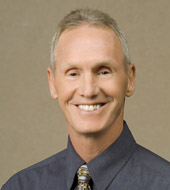Summary
Definition
History and exam
Key diagnostic factors
- visual loss
- macrocephaly and hydrocephalus
- growth failure
Other diagnostic factors
- symptoms of hypogonadotropic hypogonadism (amenorrhea, erectile dysfunction)
- headache
- symptoms of intracranial hypertension (nausea, vomiting, decreased sensorium, diplopia)
- galactorrhea
- optic atrophy
- polyuria/polydipsia
Risk factors
- age 5 to 14 years
- age 50 to 70 years
Diagnostic tests
1st tests to order
- ophthalmologic evaluation; computerized visual-field examination
- MRI brain (contrast-enhanced)
- CT brain (contrast-enhanced)
- serum prolactin
- serum growth hormone (GH)
- serum insulin-like growth factor 1 (IGF-1)
- serum insulin-like growth factor binding protein-3 (IGFBP-3)
- provocative growth hormone (GH) tests
- serum luteinizing hormone
- serum follicle-stimulating hormone
- morning serum testosterone
- serum thyroid-stimulating hormone and T3/T4
- morning serum cortisol and adrenocorticotropic hormone (ACTH)
- serum electrolytes
- urine and serum osmolality
- urine specific gravity
- plain x-rays for bone age
Tests to consider
- tissue histology
Treatment algorithm
at initial treatment
post initial treatment
Contributors
Authors
Marc C. Chamberlain, MD

Chief
Division of Neuro-Oncology
Department of Neurology and Neurological Surgery
University of Washington
Seattle Cancer Care Alliance
Seattle
WA
Disclosures
MCC declares that he has no competing interests.
Acknowledgements
Dr Marc C. Chamberlain would like to gratefully acknowledge Dr Daniel L. Silbergeld, a previous contributor to this topic.
Disclosures
DLS declares that he has no competing interests.
Peer reviewers
Larry Junck, MD
Professor of Neurology
Department of Neurology
University of Michigan
Ann Arbor
MI
Disclosures
LJ declares that he has no competing interests.
Jeff Raizer, MD
Associate Professor of Neurology
Director of Medical Neuro-Oncology
Northwestern University
Chicago
IL
Disclosures
JR declares that he has no competing interests.
Ramez Kirollos, MBChB, FRCS(Ed), FRCS(Eng), MD, FRCS(SN)
Consultant Neurosurgeon
Addenbrooke's Hospital
Cambridge University Hospitals NHS Foundation Trust
Cambridge
UK
Disclosures
RK declares that he has no competing interests.
Keyoumars Ashkan, BA, BSc, MB BCh, MRCP, FRCS, FRCPS, FRCS(SN), MD
Consultant Neurosurgeon and Lead of Neuro-Oncology
King's College Hospital
London
UK
Disclosures
KA declares that he has no competing interests.
Edwin S. Kulubya Jr., MD, MBA
Neurosurgical Research Fellow
UC Davis Medical Center
Sacramento
CA
Disclosures
EK declares that he has no competing interests.
Peer reviewer acknowledgements
BMJ Best Practice topics are updated on a rolling basis in line with developments in evidence and guidance. The peer reviewers listed here have reviewed the content at least once during the history of the topic.
Disclosures
Peer reviewer affiliations and disclosures pertain to the time of the review.
References
Key articles
Garre ML, Cama A. Craniopharyngioma: modern concepts in pathogenesis and treatment. Curr Opin Pediatr. 2007 Aug;19(4):471-9. Abstract
Puget S, Garnett M, Wray A, et al. Pediatric craniopharyngiomas: classification and treatment according to the degree of hypothalamic involvement. J Neurosurg. 2007 Jan;106(1 suppl):3-12. Abstract
Minniti G, Saran F, Traish D, et al. Fractionated stereotactic conformal radiotherapy following conservative surgery in the control of craniopharyngiomas. Radiother Oncol. 2007 Jan;82(1):90-5. Abstract
Dekkers OM, Biermasz NR, Smit JW, et al. Quality of life in treated adult craniopharyngioma patients. Eur J Endocrinol. 2006 Mar;154(3):483-9.Full text Abstract
Reference articles
A full list of sources referenced in this topic is available to users with access to all of BMJ Best Practice.

Differentials
- Pituitary adenoma
- Diaphragmatic meningioma
- Chiasmatic epidermoid
More DifferentialsLog in or subscribe to access all of BMJ Best Practice
Use of this content is subject to our disclaimer